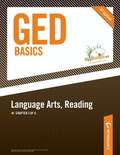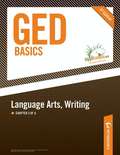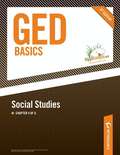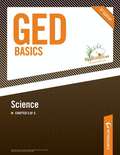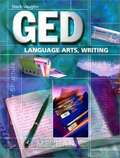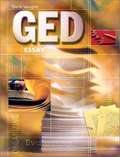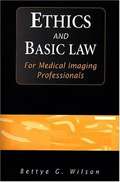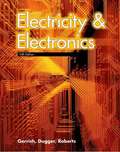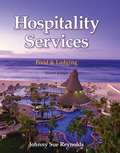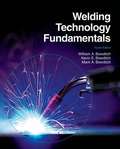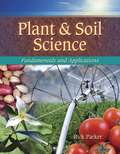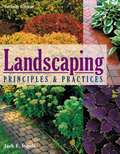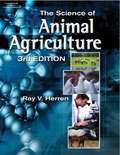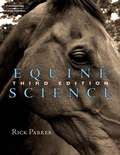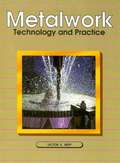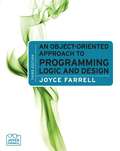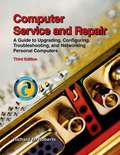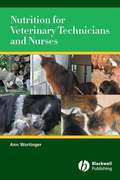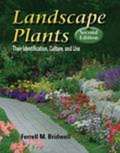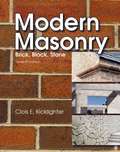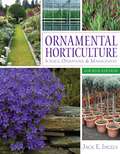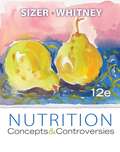- Table View
- List View
GED Basics: Chapter 2 of 6
by Peterson'sPeterson's GED Basics: Language Arts, Reading offers test-taking tips, subject review, exercises, and practice test questions to help a reader score high on the GED Language Arts, Reading Test. Readers will benefit from the review of nonfiction, commentary, fiction, drama, and poetry, along with the numerous practice questions and detailed answer explanations. The Test Yourself section can help you see if you are prepared to take this test of the GED or if additional review is needed. In addition, "Answering Your Questions about the GED" offers answers to commonly asked questions about the GED--where to take the test, what's on the test, how the test is scored, when results are sent, if one can take the GED more than once--and more.
GED Basics: Chapter 3 of 6
by Peterson'sPeterson's GED Basics: Language Arts, Writing offers test-taking tips, subject review, exercises, and practice test questions to help a reader score high on Parts I and II of the GED Language Arts, Writing Test. Readers will benefit from the thorough review of: * Writing a complete sentence * Subject-Verb agreement * Sentence Fragments * Run-on Sentences * Word choice * Sentence structure * Grammar review * Punctuation review * Writing the essay The Test Yourself sections will help you see if you are prepared to take this test of the GED or if additional review is needed. In addition, "Answering Your Questions about the GED" offers answers to commonly asked questions about the GED--where to take the test, what's on the test, how the test is scored, when results are sent, if one can take the GED more than once--and more.
GED Basics: Chapter 4 of 6
by Peterson'sPeterson's GED Basics: Social Studies offers test-taking tips, subject review, exercises, and practice test questions to help a reader score high on the GED Social Studies Test. Readers will benefit from the review and practice exercises of the following areas: * Geography * Behavioral science * Economics * Political science * History The Test Yourself section will help you see if you are prepared to take this test of the GED or if additional review is needed. In addition, "Answering Your Questions about the GED" offers answers to commonly asked questions about the GED--where to take the test, what's on the test, how the test is scored, when results are sent, if one can take the GED more than once--and more. Need extra help in history? In GED Basics: Social Studies, readers will see easy-to-use links to HippoCampus.org, an innovative Web site where interactive subject help is offered via high-quality multimedia lessons and course content. HippoCampusTM is a project of the Monterey Institute for Technology and Education (MITE), supported by The William and Flora Hewlett Foundation, and designed as part of Open Education Resources (OER). GED Basics: Social Studies is a chapter of GED Basics, which offers test-taking tips, subject review, and practice test questions for each GED Test--Language Arts, Reading; Language Arts, Writing (Parts I and II); Social Studies; Science; and Math (Parts I and II).
GED Basics: Chapter 5 of 6
by Peterson'sPeterson's GED Basics: Science offers test-taking tips, subject review, exercises, and practice test questions to help a reader score high on the GED Science Test. Readers will benefit from the review and practice exercises of the following areas: * Life science * Earth and space science * Chemistry * Physics The Test Yourself section will help you see if you are prepared to take this test of the GED or if additional review is needed. In addition, "Answering Your Questions about the GED" offers answers to commonly asked questions about the GED--where to take the test, what's on the test, how the test is scored, when results are sent, if one can take the GED more than once--and more. Need extra help in science? In GED Basics: Science, readers will see easy-to-use links to HippoCampus.org, an innovative Web site where interactive subject help is offered via high-quality multimedia lessons and course content. HippoCampusTM is a project of the Monterey Institute for Technology and Education (MITE), supported by The William and Flora Hewlett Foundation, and designed as part of Open Education Resources (OER). GED Basics: Science is a chapter of GED Basics, which offers test-taking tips, subject review, and practice test questions for each GED Test--Language Arts, Reading; Language Arts, Writing (Parts I and II); Social Studies; Science; and Math (Parts I and II).
GED Skill Book: Language Arts, Writing the Essay
by Steck-VaughnThis book will help you prepare for the GED Language Arts, Writing Test, Part II. The Book focuses on writing a five-paragraph essay, which is an effective way to present a GED essay. A five-paragraph essay consists of an introductory paragraph, three body paragraphs, and a concluding paragraph. This book gives you a three-step approach to writing an effective GED essay: planning, writing, and checking your essay.
GED: Language Arts, Writing
by Steck-VaughnThe Steck-Vaughn GED Language Arts, Writing book helps you develop the necessary proofreading and editing skills by giving detailed explanation of why the correct answer is right and the incorrect answers are wrong. By studying these explanations, you will learn strategies for understanding and thinking about these topics. To prepare for the essay portion of the test, consider reviewing the Steck-Vaughn GED Essay book.
GED: Essay
by Steck-VaughnThe only GED preparation program based on results of the current GED Tests! The new Steck-Vaughn GED is a result of thorough research and analysis based on examining results from the latest GED Tests. It has more practice tests, more exercise pages, and expanded lessons. Each of the six books(one for every GED testing area) teaches the knowledge, skills, and confidence a GED candidate needs for test-day success -- and the results are guaranteed! A simple, self-contained guide to essay writing -- Part II of the GED Writing Skills Test. Steck-Vaughn's unique POWER points (Plan, Organize, Write, Evaluate, Revise) are provided as an effective tool for producing good essays. Sections on "Content" and "Scoring" and suggestions on liming help learners plan test-taking strategies.
Ethics and Basic Law for Medical Imaging Professionals
by Bettye G. WilsonComplies with ASRT curriculum guidelines requiring coverage of ethical theory, behavior, and dilemmas; legal responsibilities; and patient consent. Provides coverage of special issues, such as the impaired colleague and special patient populations, including the terminally ill patient and the patient with an infectious disease. Discussion questions facilitate classroom discussion and student analysis. Each chapter includes objectives and an end-of-chapter summary.
Electricity & Electronics
by Howard H. Gerrish William E. Dugger Jr. Richard M. RobertsTextbook on the fundamentals for technical school students. No bibliography.
Hospitality Services: Food & Lodging
by Johnny Sue Reynolds- Clear, well-organized presentation of a complex and diverse industry. <BR>- Profiles of fascinating and inspiring industry leaders. <BR>- Supplements provide worksheets and strategies to reinforce learning.
Biology of the Chemotactic Responses
by J. M. Lackie P. C. WilkinsonThe study of chemotactic reactions has always attracted scientists from many disciplines. Not only does it have an intrinsic fascination as a form of cellular behaviour, but it is now beginning to be possible to approach it at the molecular level. In at least three widely diverse cell types, the enterobacteria, the cellular slime moulds and the mammalian leucocytes, rapid progress is being made in understanding the underlying mechanisms of signal perception and message transduction.
Welding Technology Fundamentals
by William A. Bowditch Kevin E. Bowditch Mark A. BowditchWelding Technology Fundamentals covers the equipment and techniques associated with the welding and cutting processes most widely used in industry today. These processes include: oxyfuel gas welding and cutting, shielded metal arc welding, gas metal arc welding, flux cored arc welding, gas tungsten arc welding, and resistance welding. Technical information regarding weld inspection and testing, welder qualification, drawing interpretation, and welding symbols is also included. The text is organized into eight sections, which can be studied independently or in sequence. Written in easy-to-understand format, this text is extensively illustrated and includes many tables and charts for selecting the variables required to make a good weld.
Plant and Soil Science: Fundamentals and Applications
by Rick ParkerThis book combines the basic knowledge of plant and soil science, in an easy to read and teach format, and provides practical real world application for information learned. Organized into twenty-eight chapters, each chapter features learning objectives, key terms, tables, charts, illustrations and color photographs to aid the learning and teaching process.
Landscaping: Principles and Practices (7th edition)
by Jack IngelsLandscaping: Principles & Practices, 7th Edition provides the basic knowledge and industry information needed to be successful in the field of landscape design and architecture. Focusing on three areas of professional practice; design, contracting and management, traditional topics such as design, plant installation, and pricing are covered, as well as topics not found in most other books, such as interior landscaping, xeriscaping, water gardens, and safety.
The Science of Animal Agriculture (3rd edition)
by Ray V. HerrenThe Science of Animal Agriculture, third edition, is designed for courses aimed at teaching science along with concepts associated with the industry of animal agriculture. This book responds to the current trends in education that promote connecting academic theory with real world applications. Research shows that students gain a better grasp of scientific theory if the theories are taught in an application context, and this text presents the application of biological science used in producing and caring for animals. Topics such as nutrition, anatomy, genetics, entomology, pathology, and animal behavior are covered in depth. These complicated areas are presented in the context of how they are used in the animal industry, allowing the student to make a distinct correlation. Students will benefit from this science-based, animal agriculture text that makes complicated biology principles easy to grasp the context of their application.
Equine Science (3rd edition)
by Rick ParkerHorses hold a special place in North America's history and culture. As America evolved, horses contributed to the economy by providing power for transportation and industry. Today horses still contribute to the economy but in a much different way. According to a study commissioned by the American Horse Council Foundation, the 9.2 million horses in the United States contribute $39 billion annually in direct economic impact and support 1.4 million jobs on a full-time basis. When indirect spending is included, the horse industry's economic impact reaches $102 billion annually. The overall economic impact of horses comes from racing, recreation, sports, rodeos, farm work, pleasure riding, and competitions. While millions of people participate in the horse industry as spectators, almost 5 million Americans are involved in the industry as horse owners, service providers, employees, and volunteers. Horses are found in every state, and 45 states have at least 20,000 horses. The horse industry is vital and growing. With this vitality and growth comes the need for information about horses, so the numbers of horse-related educational programs, books, pamphlets, videos, and Internet sites are increasing rapidly.
Metalwork: Technology and Practice (9th edition)
by Victor E. ReppThis book provides a comprehensive introduction to metal fabrication technology. It is intended as a textbook for entry level courses that provide laboratory experiences in metal fabrication.
An Object-oriented Approach to Programming Logic and Design (3rd edition)
by Joyce FarrellAn Object-Oriented Approach to Programming Logic and Design, Third Edition provides the beginning programmer with a guide to developing object-oriented program logic. This textbook assumes no programming language experience. The writing is nontechnical and emphasizes good programming practices. The examples are business examples; they do not assume mathematical background beyond high school business math. Additionally, the examples illustrate one or two major points; they do not contain so many features that students become lost following irrelevant and extraneous details.
Computer Service and Repair: A Guide to Upgrading, Configuring, Troubleshooting, and Networking Personal Computers
by Richard M. RobertsTeaches the practices and principles needed to pass the A+ Certification Exams, as well as to build, upgrade, and troubleshoot your PC.
Nutrition for Veterinary Technicians and Nurses
by Ann WortingerThis book serves an introduction to the fundamentals of nutrition and also a guide to monitoring the nutritional needs of patients in daily practice. Students will benefit from the clear and consistent approach to basic principles of nutrition. Practicing technicians and nurses will appreciate the practical applications and techniques for managing the nutritional needs of both sick and healthy patients and guidance for educating clients.
Landscape Plants: Their Identification, Culture, and Use (2nd edition)
by Ferrell M. BridwellIntended to help students, nursery people, landscape architects, educators, and homeowners in accurately identifying and growing an array of mostly typical woody landscape plants. A beginning chapter discusses plant identification and characteristics as well as the functional and aesthetic uses of plants. The remaining chapters present the plants, with one page of text and several passable color photos devoted to each. Information provided includes hardiness zones (mostly USDA zones 5 to 9), dimensions, fruit, texture, growth rate, culture, pest problems, habit, family, leaf and flower characteristics, selections and cultivars in cultivation, and landscape notes. Entries include ground covers; vines; dwarf, medium, and large shrubs; small, medium, and large trees; and grasses, palms, and bamboo.
Ornamental Horticulture: Science, Operations, and Management (4th edition)
by Jack E. IngelsThis comprehensive book is an ideal introduction for both hobbyists and professionals to the art and science of ornamental horticulture providing a balanced coverage of the diverse elements integral to this exciting field and a realistic view of the required business skills while also giving them the chance to develop their creativity.
Homes and Interiors (7th edition)
by Ruth F. SherwoodHomes and Interiors offers content appropriate for both an interior design course and a consumer-based housing course. This edition places even greater emphasis on the interior design process. Units 1 & 2 address housing from a consumer point-of-view. Units 3 & 4 focus on the actual structure and style of homes. Units 5 & 6 familiarize students with the interior design process. Special topics that are highlighted include Consumer Considerations, Commercial Applications, The Impact of Technology, and Careers in Housing and Interiors.
Nutrition Concepts and Controversies (12th edition)
by Frances Sienkiewicz Sizer Ellie WhitneyThis book provides practical applications and accessible explanations to dispel common misconceptions about nutrition and empowers readers to make informed, healthier decisions.
